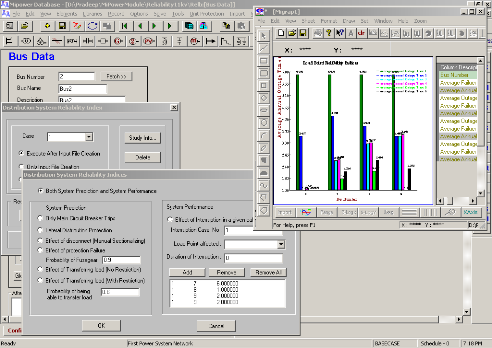Load forecast is used to predict the energy demand during the planning stages of a power system. The robust multivariate regression technique is used for forecasting the energy demand accurately. The models are built based on the historical data.
The salient features of load forecast are :
- Versatile load models
- Best model selection for regression analysis
The output of the load forecast is used as an input to following studies.
- Generation and transmission capital investment
- Spinning reserve planning
- Planning of fuel ordering
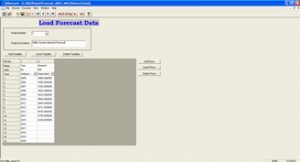
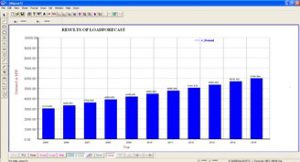
This module is designed to compute the substation ground grid. The program conforms to ANSI and IEEE Guide for Safety (80-2000) in AC Substation Grounding. Ground Grid Design(GGD) module has been built, especially for utilities and industries, to design an economic and safe grounding grids. The tool is also used for checking adequacy of existing grounding grids for possible reinforcement. The GGD has efficient and well-proven analysis algorithms, User-friendly data entry and graphical 2-D plotting.
The key features of the module are :
- Economic Design of EHV Grounding Grids
- Use of standard ANSI/IEEE 80-1986/2000 Methodologies
- IEC TS 60479 Compliant
- IS 3043-1986 Compliant
- 2-D Potential profile plotting
The output of the tool helps in analyzing earth potentials and enables engineers to choose a technically sound and economical design of grounding grid from a variety of options.
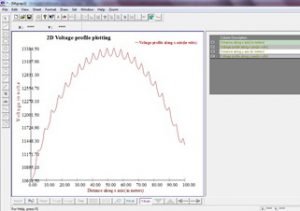

Battery sizing is a tool to determine the number of cells and cell size of the battery for a designated duty cycle such that it satisfies the maximum system voltage during the battery charging period and minimum system voltage during battery discharging period. The number of cells/string is determined to provide sufficient power to the load cycle considering the minimum system voltage and minimum operating temperature. It also considers different factors that affect the battery performance, such as design margin, aging compensation, initial capacity, etc.
The key features of the module are :
- IEEE Standard 485-1997 compliant.
- Computes number of cells and size for designated duty cycle
- Handles voltage and temperature constraints
- Battery performance assessment for design margin and aging compensation.
The output of the battery sizing program provides the size of the battery for a given load pattern.
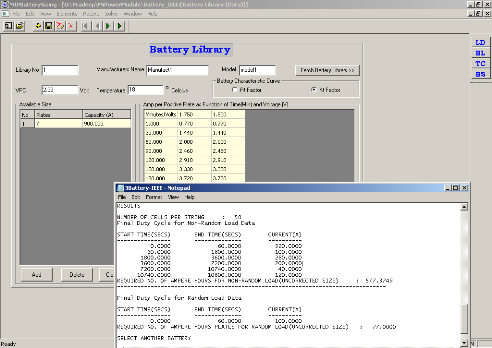
Line and Cable parameter program computes overhead transmission line and cable parameters from the design data. Overhead transmission line is represented by an equivalent “Pi” model, having resistance and reactance in series and line charging susceptance equally divided at either node as shunt element.
Key features of line parameter program are :
- Calculates positive and zero sequence parameters of the overhead lines and cables
- Single and multi phase configurations with ground wires
- Calculates the mutual impedance between power and communication lines
- Skin effect is considered for transmission lines
The output of the program is used as input data for the modeling of the lines/ cables for system studies.
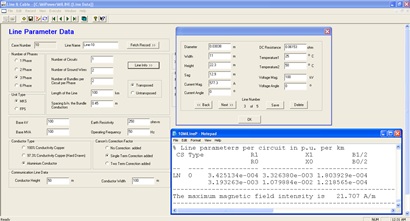
Available Transfer Capability program computes the measure of the transfer capability and available margin in the transmission network and suggests the system operations with various schedules of generators and loads participating in bilateral transactions to maintain an efficient, coordinated and economical distribution.
The key features of the module are :
- Full AC power flow solution – accurately determines real and reactive power flows, bus voltages
- An efficient Repeated Power Flow (RPF) is used for processing the large number of scenarios/ contingencies to assess ATC for each transfer capacity evaluation
The output of the tool is used by the utility to determine the available transfer capacity in the transmission network.
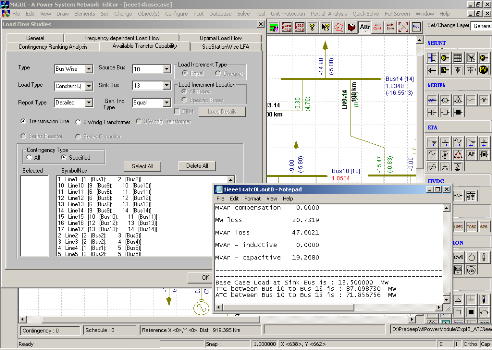
f the Open Access Feasibility are :
- Facility to model generators and loads entering into bilateral transactions
- Utilizes the network for low cost generation
- Determines the OAF for the given network for given load/generation profile

With the electricity consumers having right to get reliable and quality supplies, gaging such indices is important for distribution utilities. Reliability assessment tool computes such standard reliability indices which include SAIDI, CAIDI, SAIFI and CAIFI. These indices gage the performance and quality, and compared with the standard requirements.
The key features of the module are :
- Computation of reliability indices like SAIDI,SAIFI,CAIDI, CAIFI
- Report option with and without exclusions
- Detailed report of reliability assessment
- Graphical representation of the reliability indices
The output indices mainly represent the outage duration, outage frequency and number of consumers affected.
